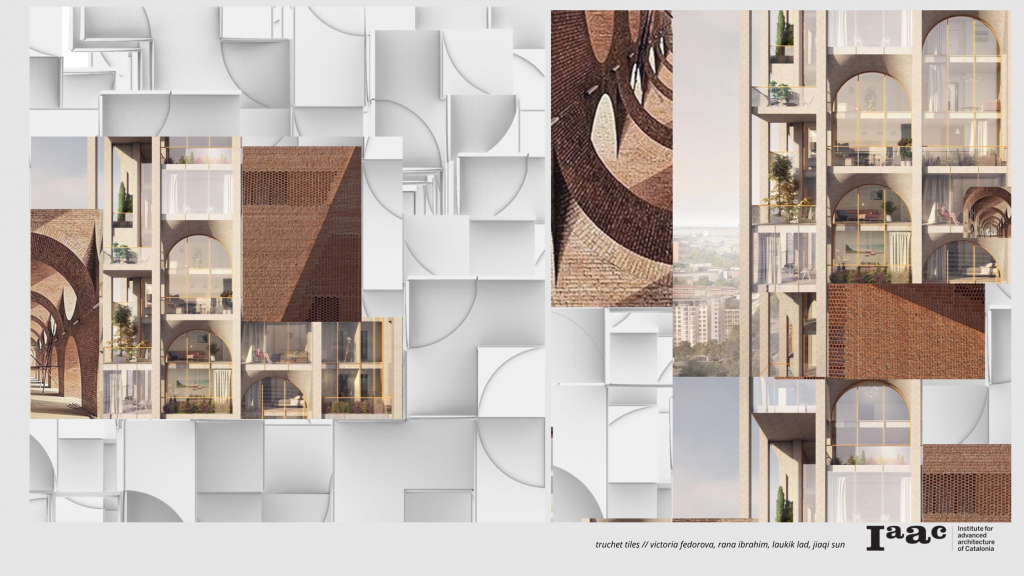As a part of our project for the Advanced Algorithmic Strategies Seminar, we explore the architectural capabilities of elements designed and assembled using the pattern making logics of Truchet Tiles. Truchet tiles are square tiles decorated with patterns that are not rotationally symmetric. When placed in a square tiling of the plane, they can form varied patterns, and the orientation of each tile can be used to visualize information associated with the tile’s position within the tiling.
Truchet tiles were first described in a 1704 memoir by Sébastien Truchet entitled “Mémoire sur les combinaisons”, and were popularized in 1987 by Cyril Stanley Smith.
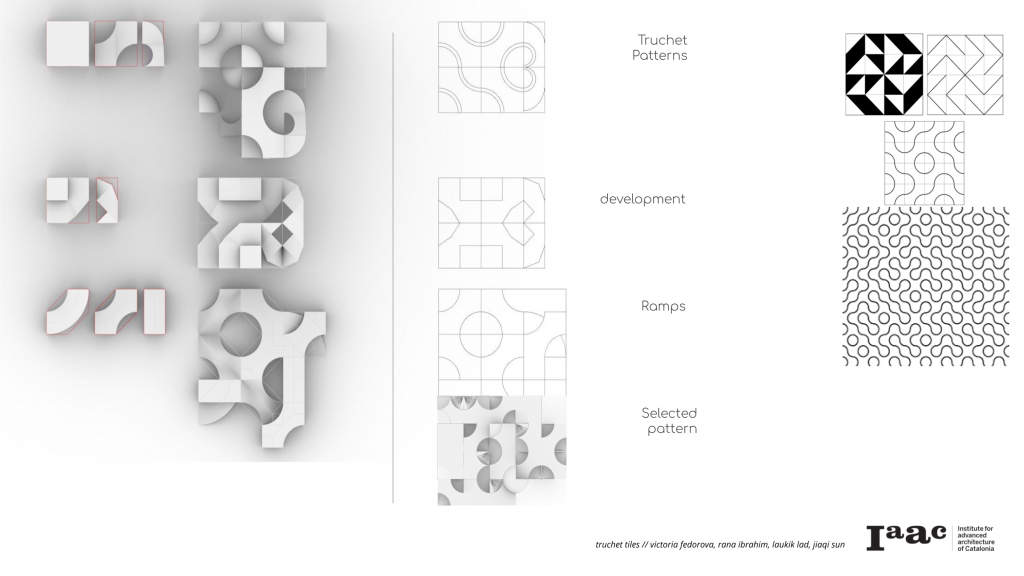
We start the development of our modules by taking inspiration from traditional truchet tiles and their pattern-making logics.
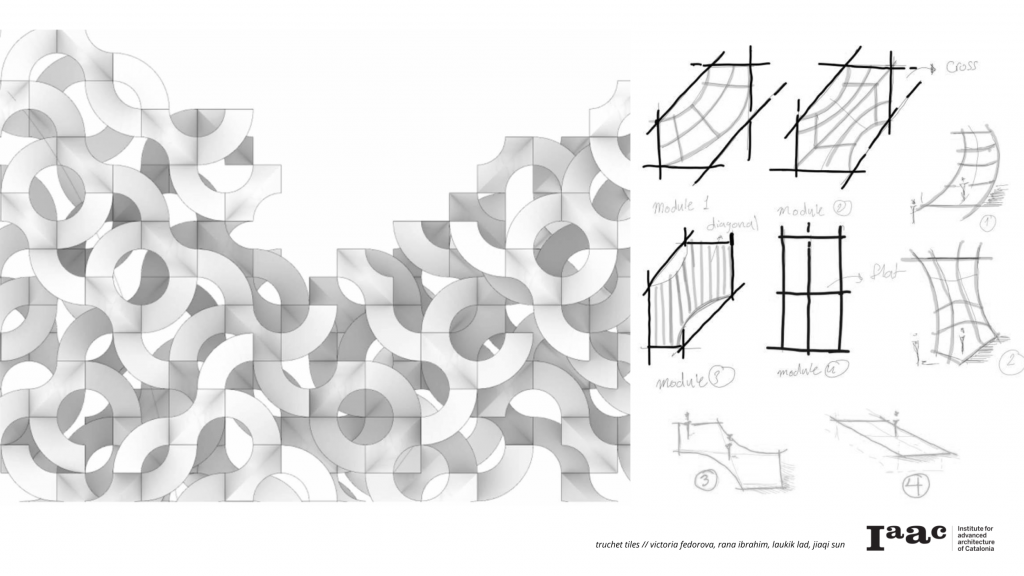
Design modules based on truchet patterns.
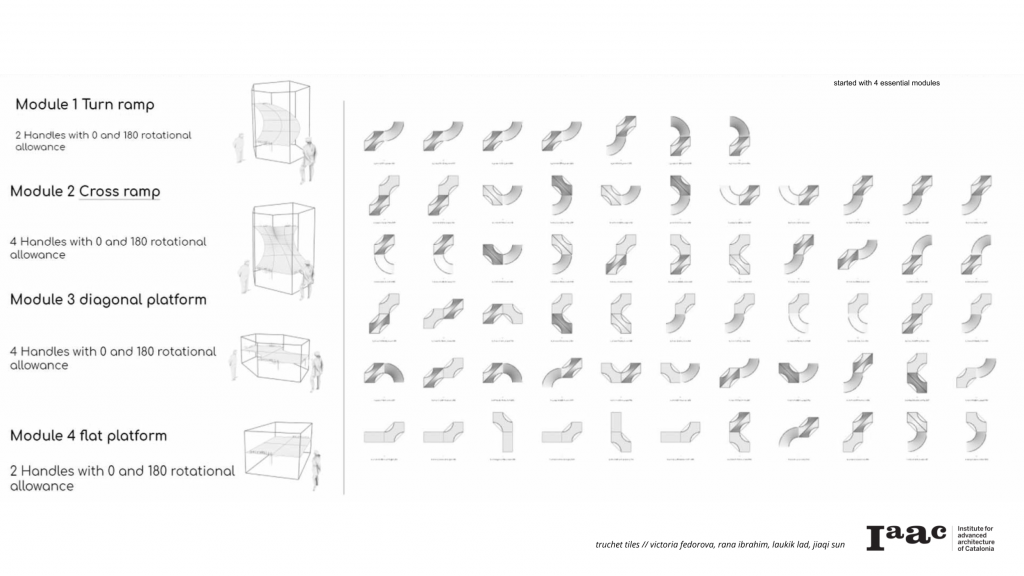
Analyse the heuristic outputs from these elements.
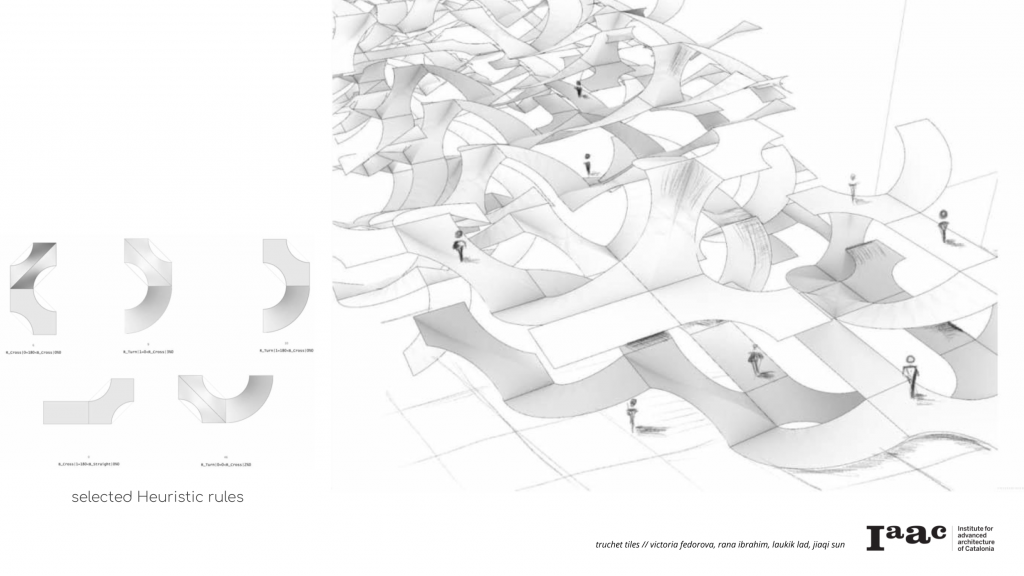
Random assembly results obtained the selected heuristic rules.
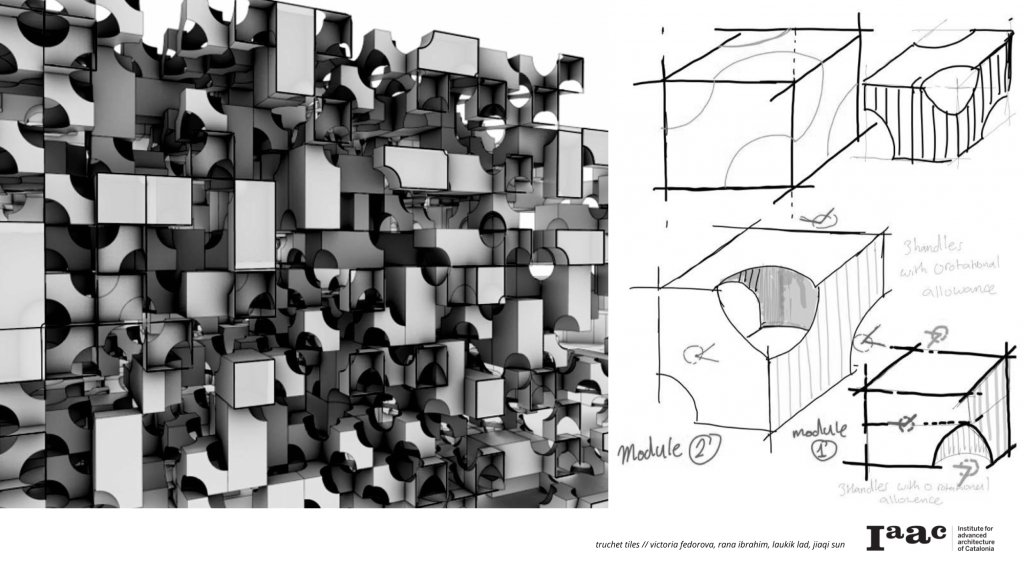
Other design explorations.
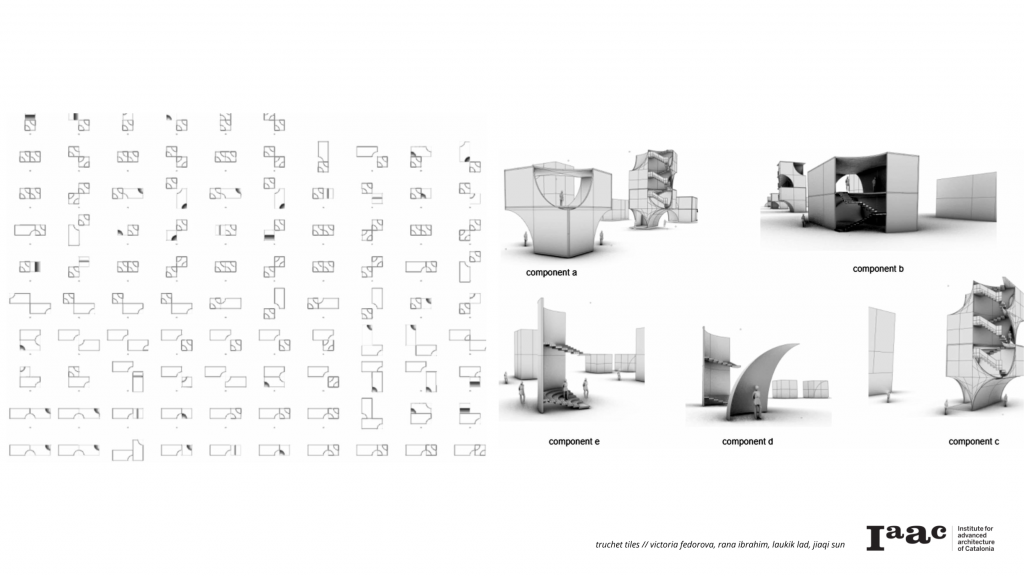
Other design explorations.
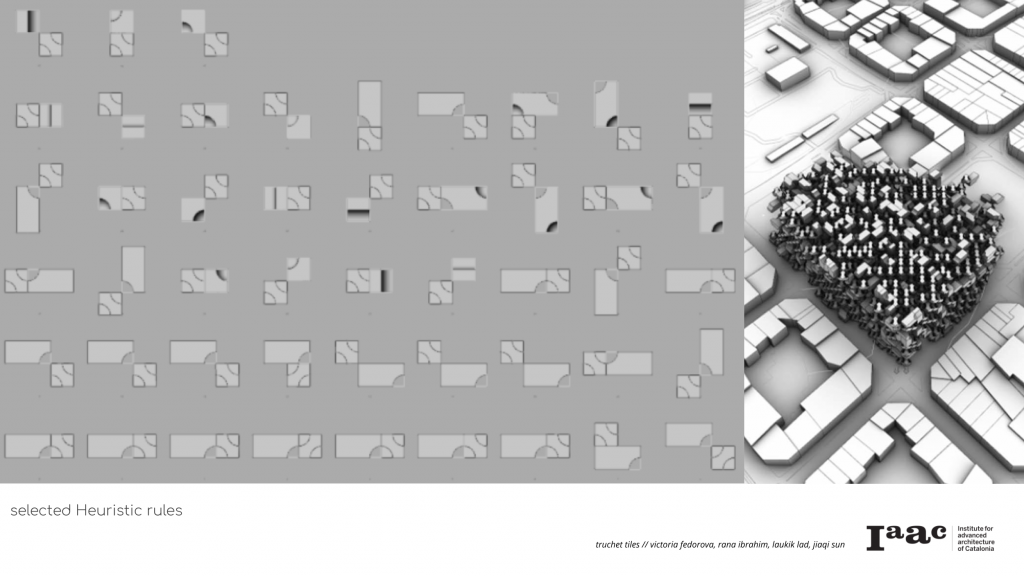
Other design explorations.
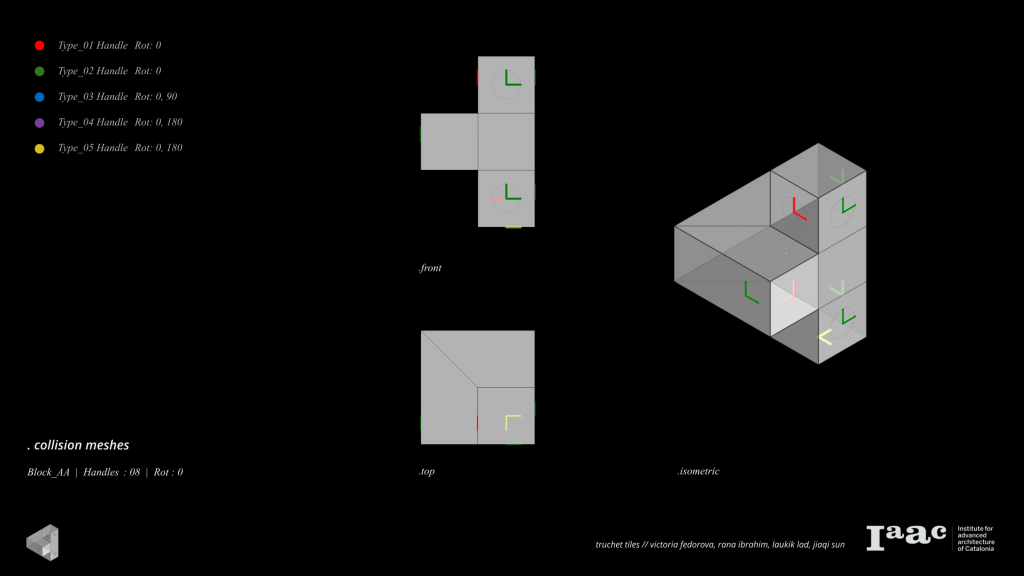
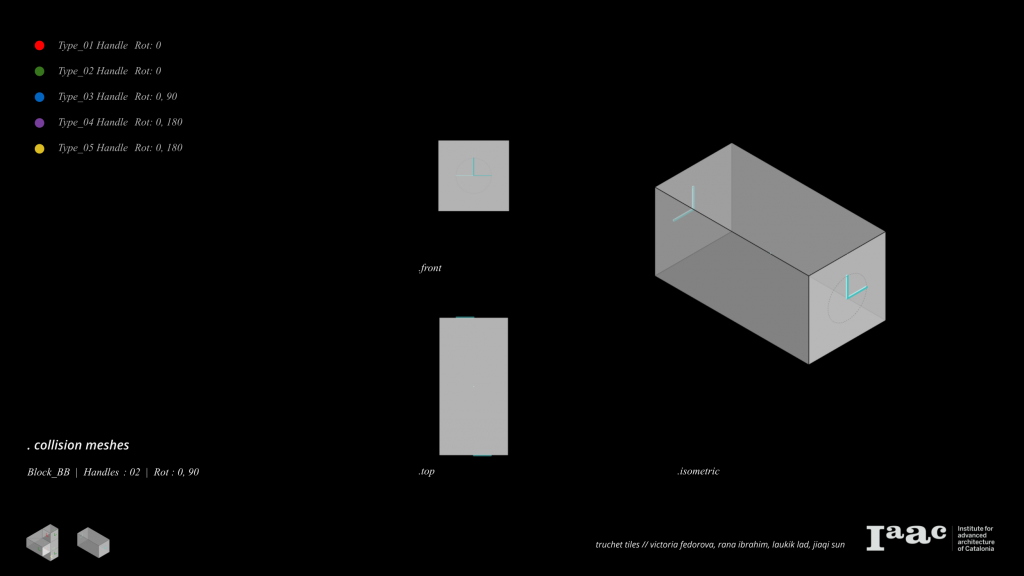
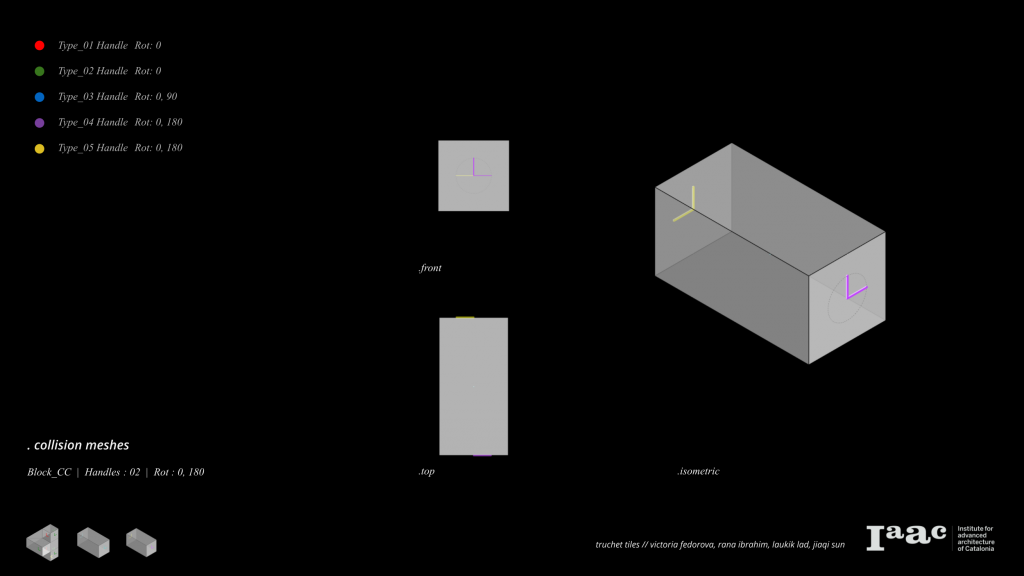
Defining modules.
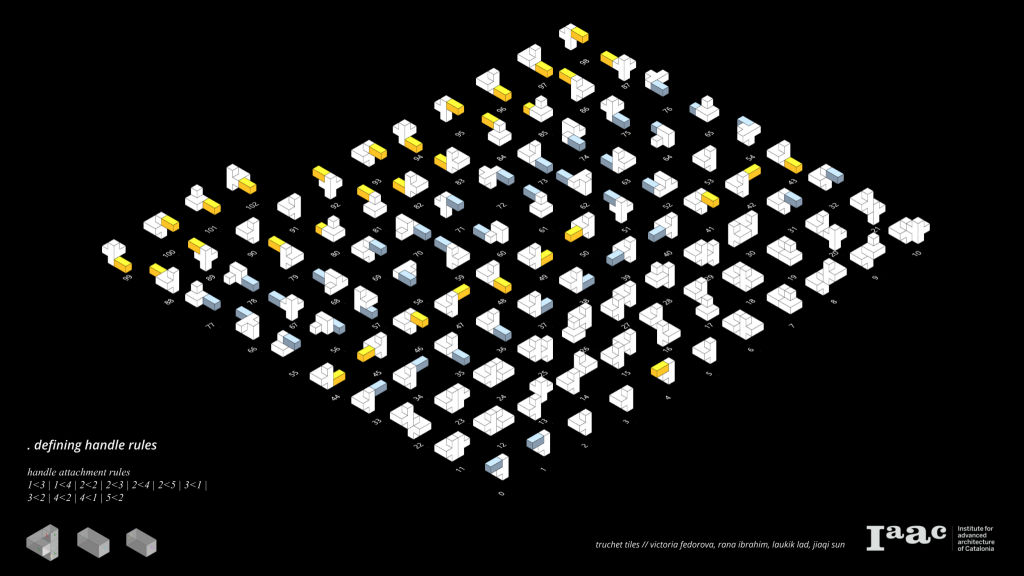
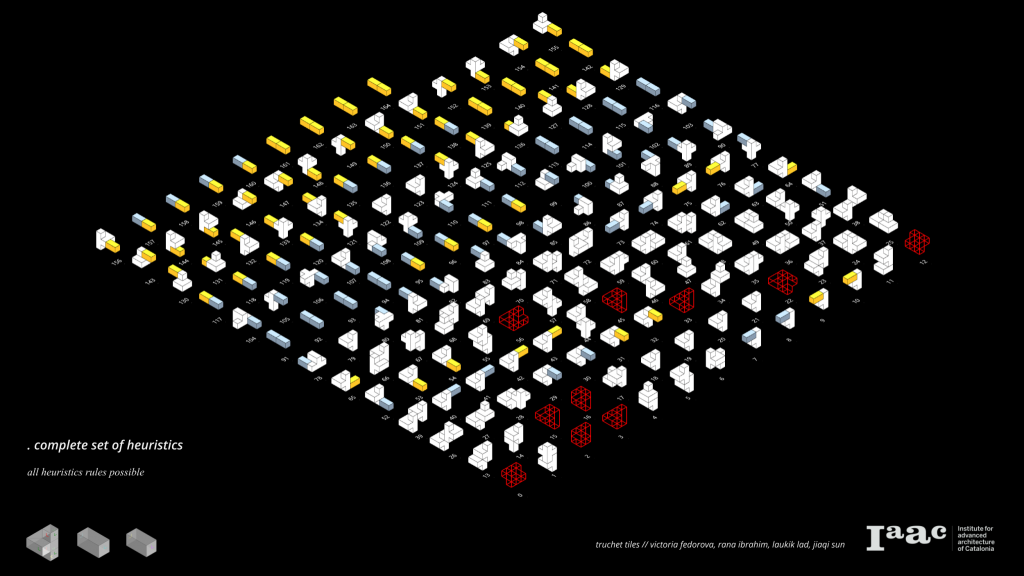
Filtering Heuristics.
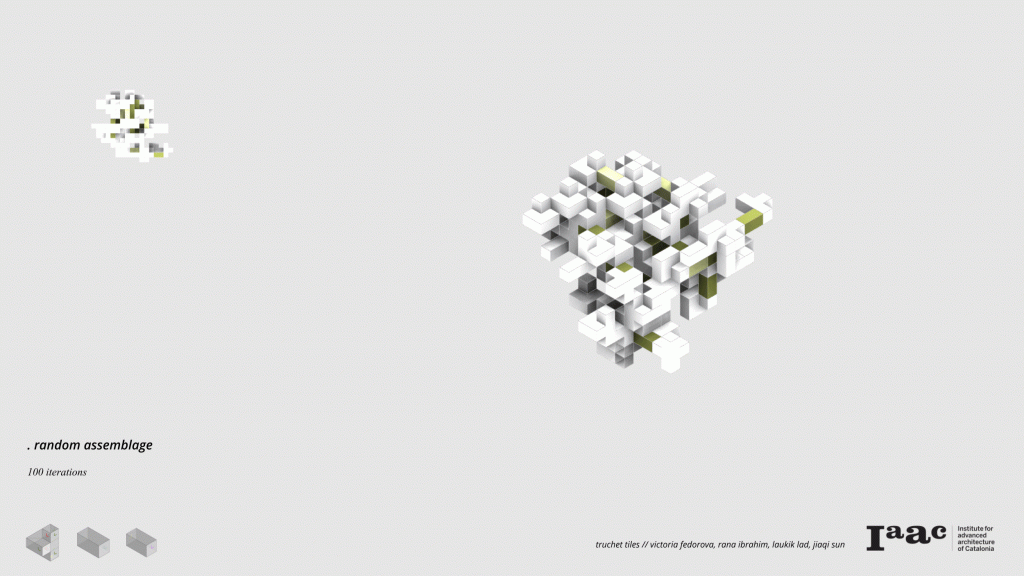
Random assembly – 100 – 400 – 800 Iterations.
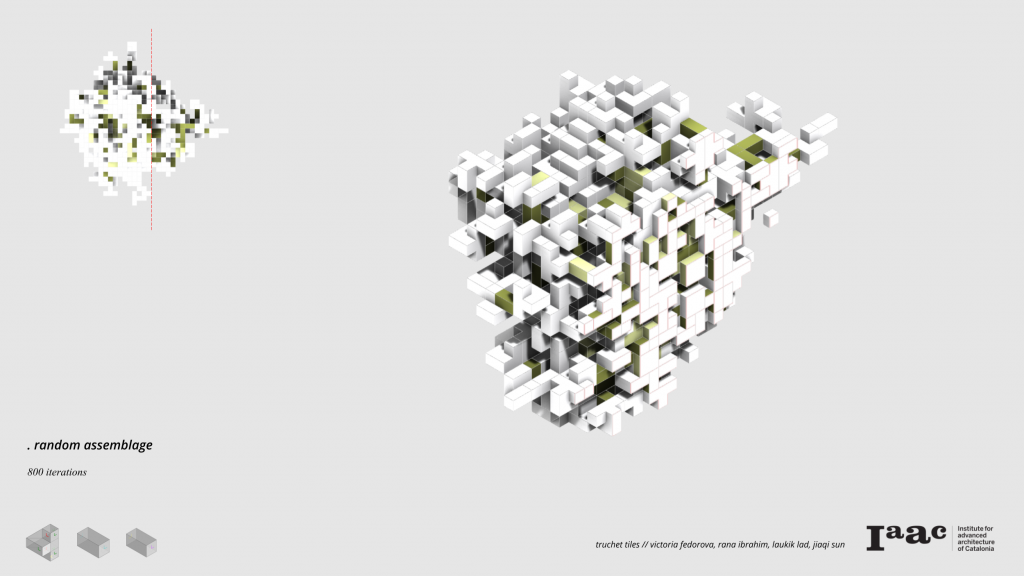
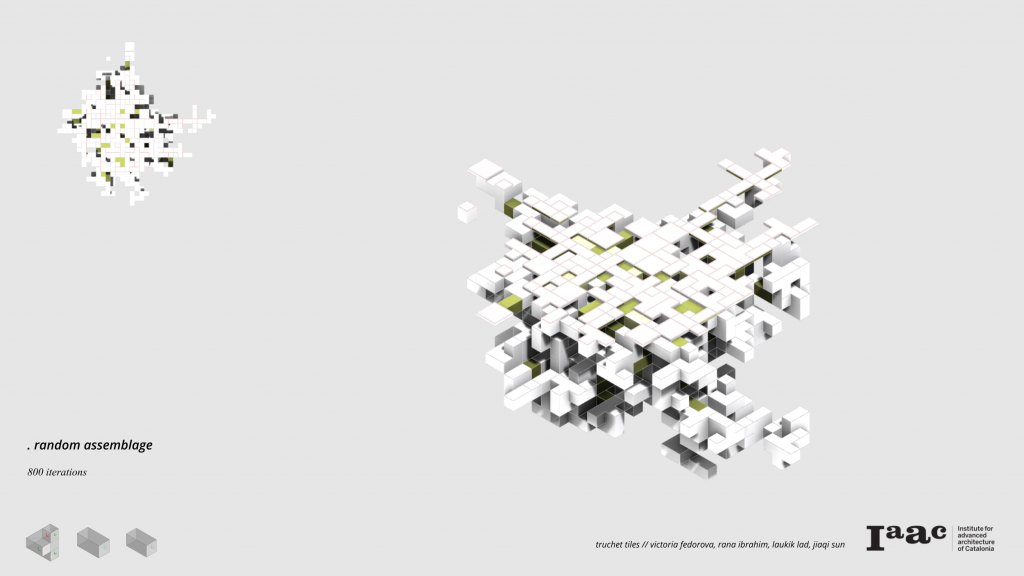
Analyzing densities from sectional perspectives.
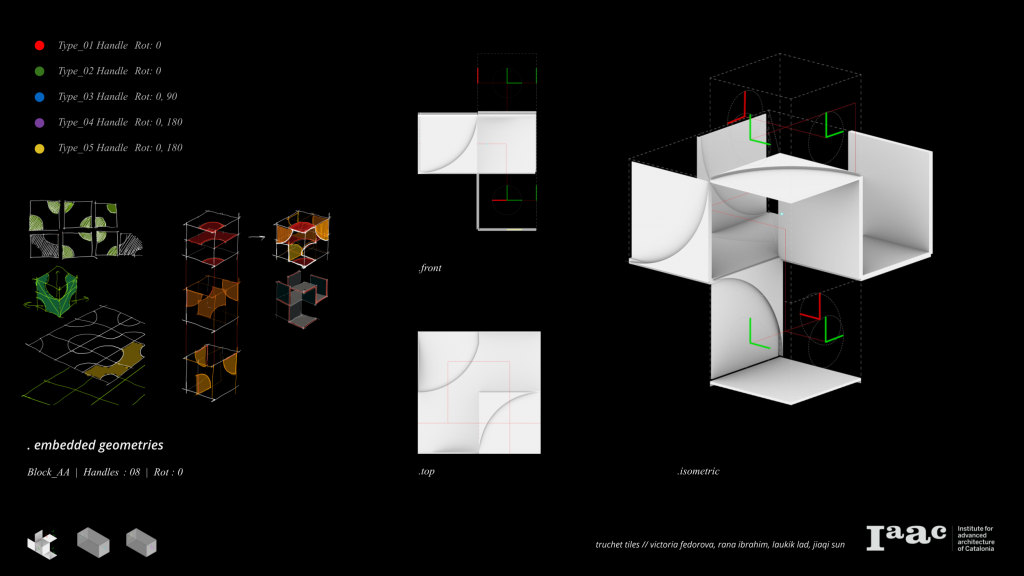
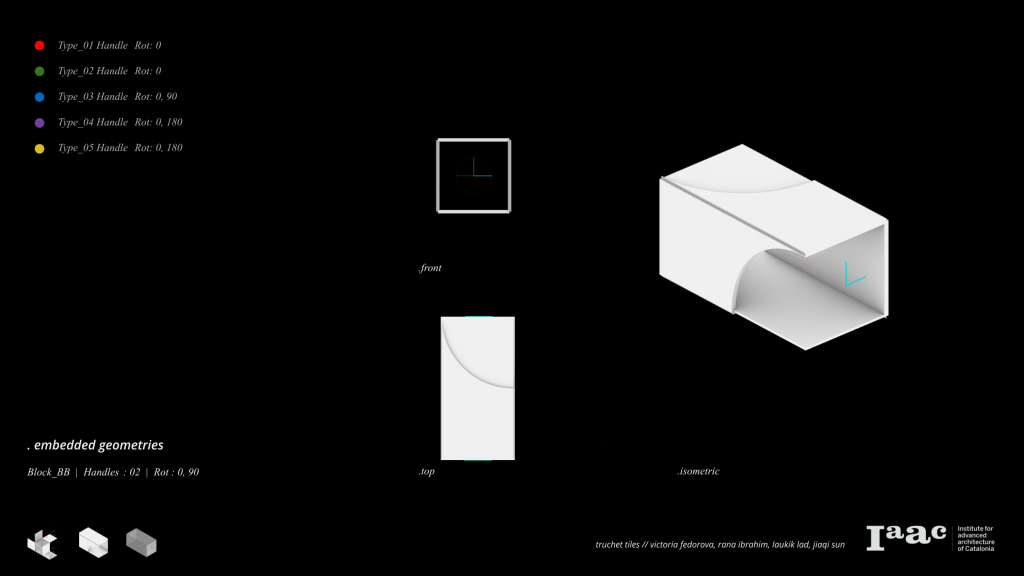
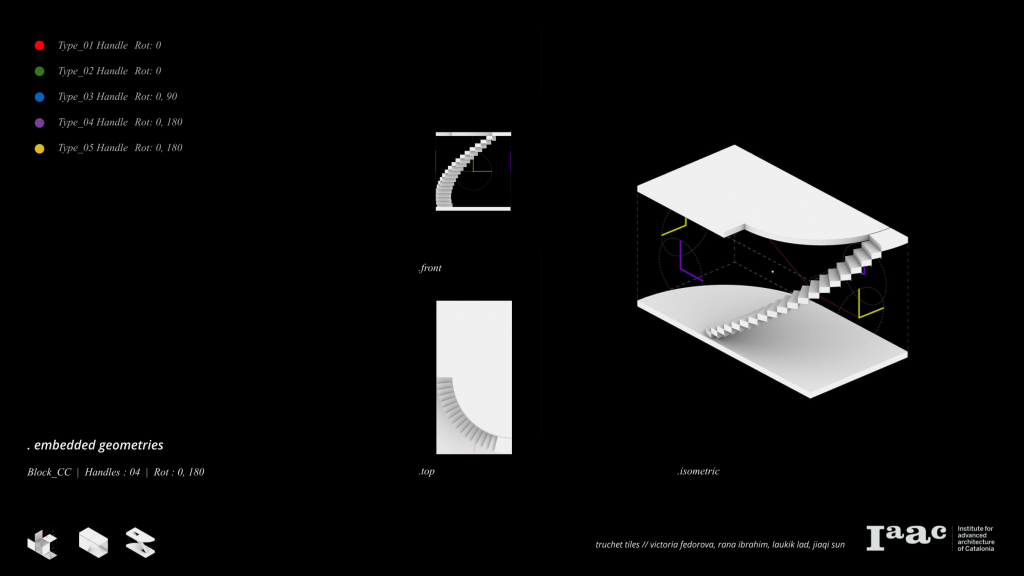
Defining embedded geometries.
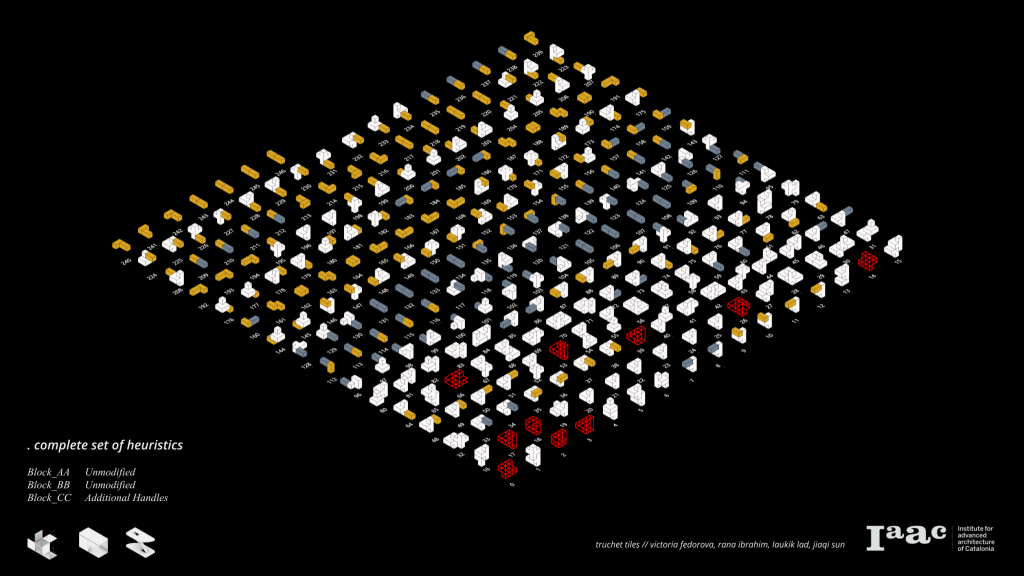
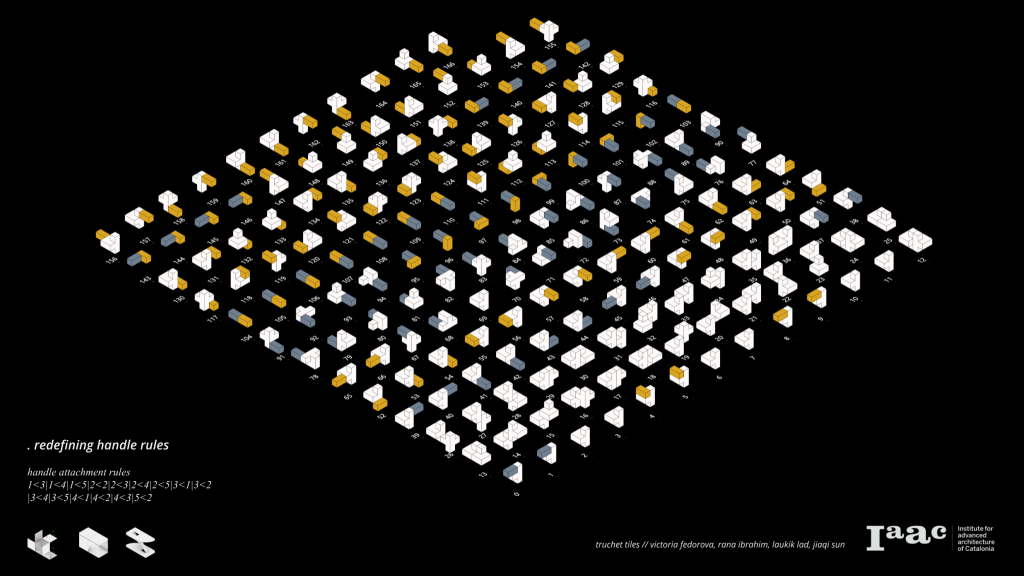
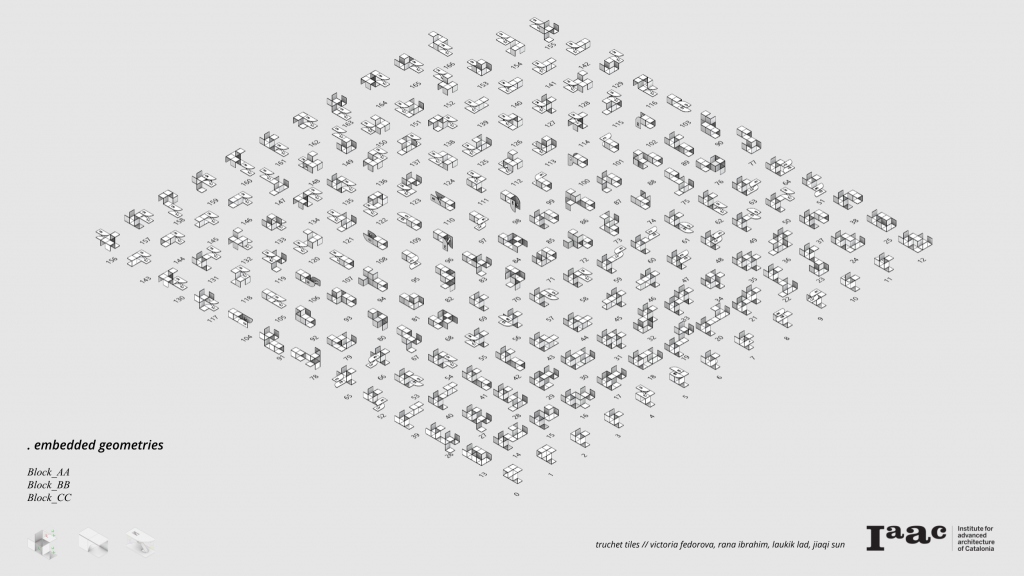
Re-filtering heuristics results for redesigned collision meshes.
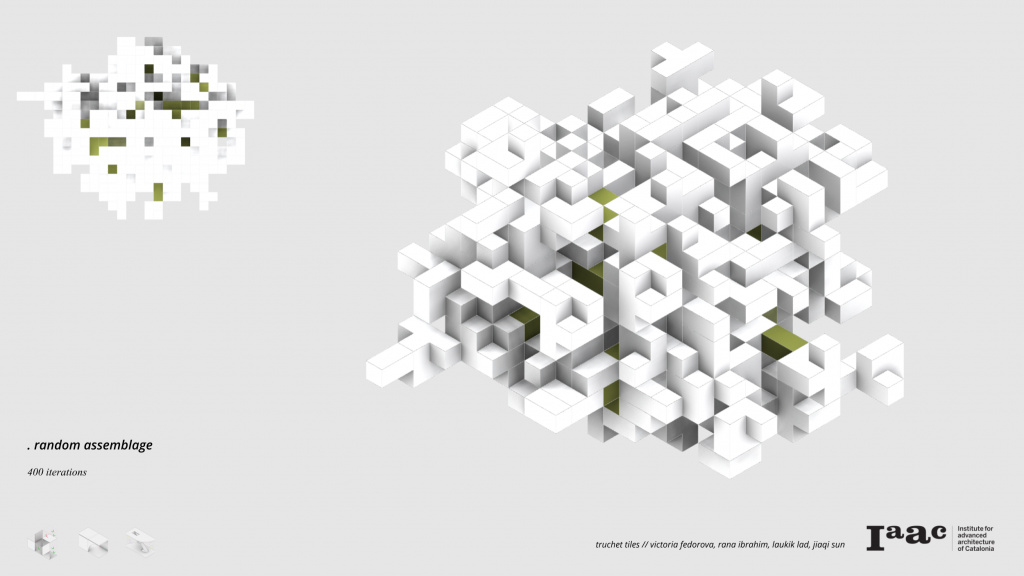 Random assembly.
Random assembly.
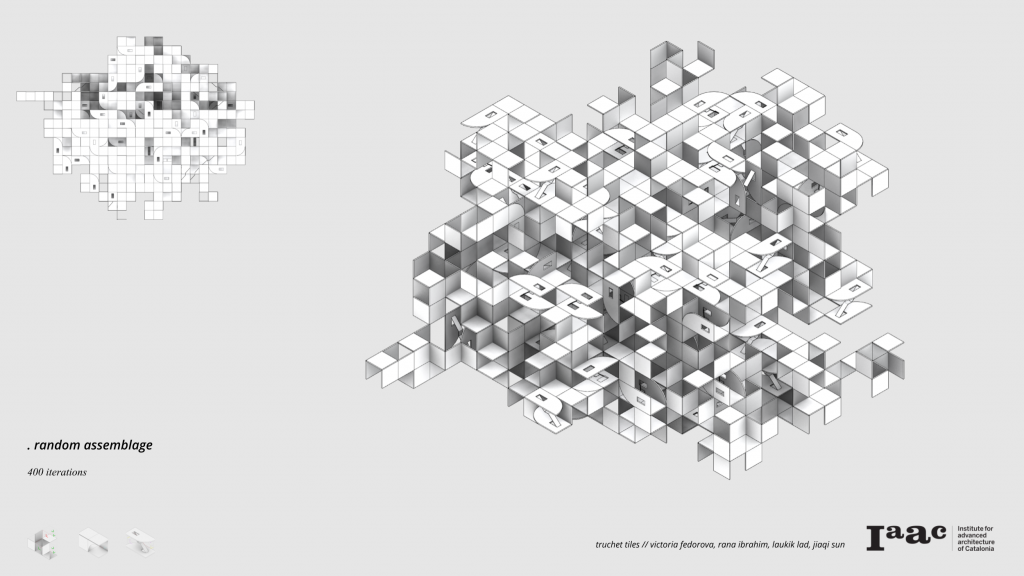
Substituting embedded geometries.
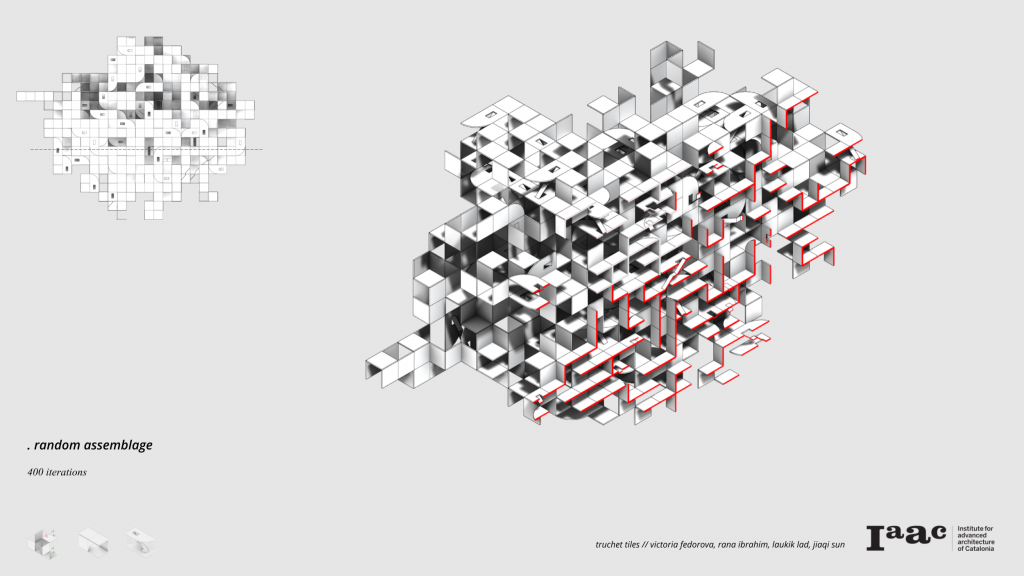
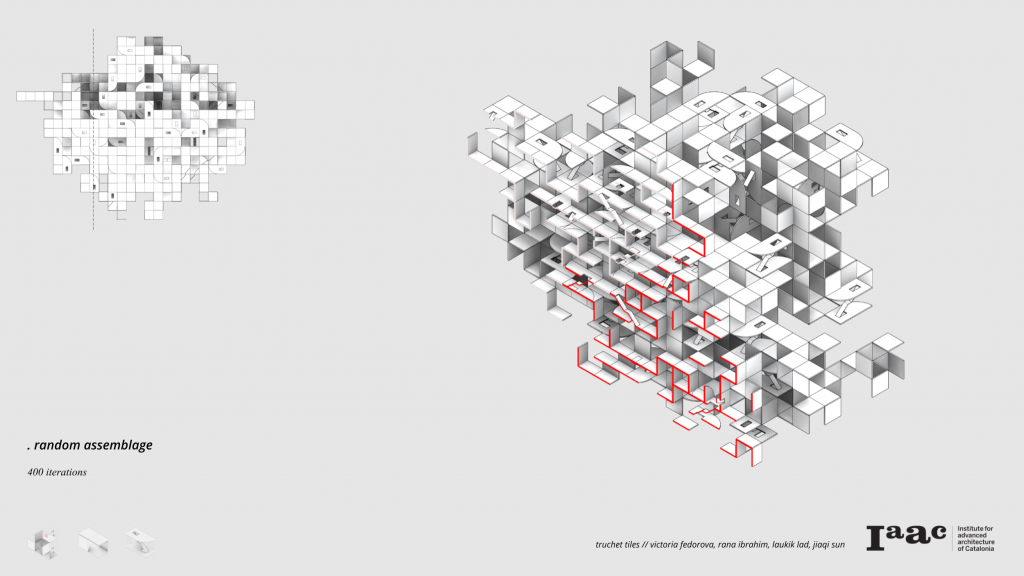
Analyzing spaces in sectional perspectives.
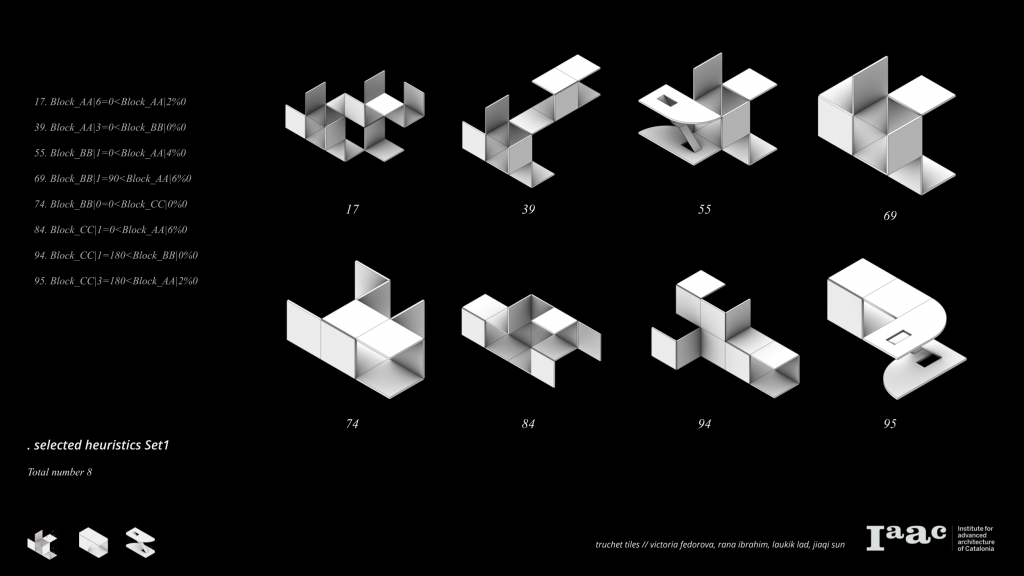
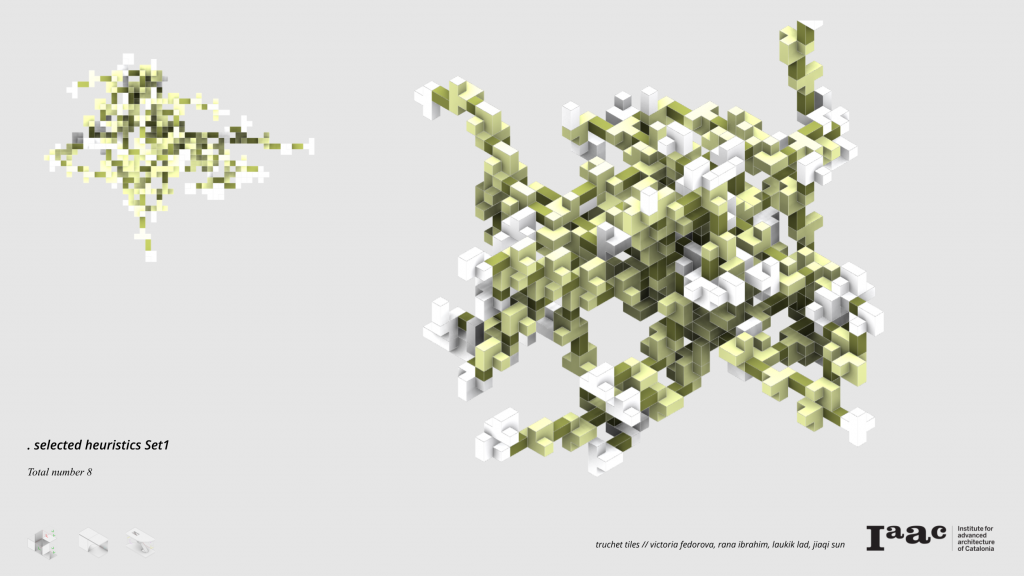
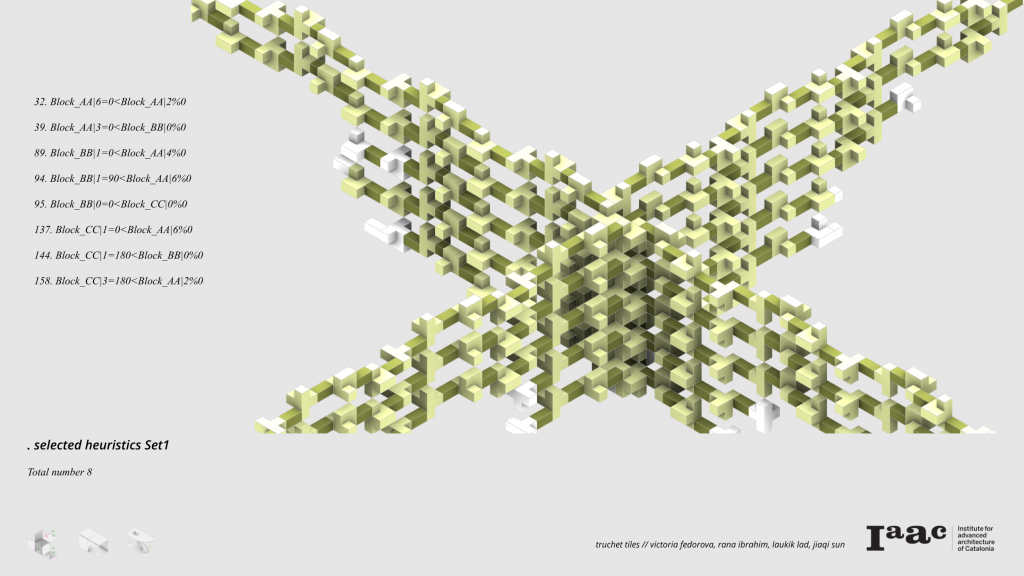
Exploring various heuristics sets.
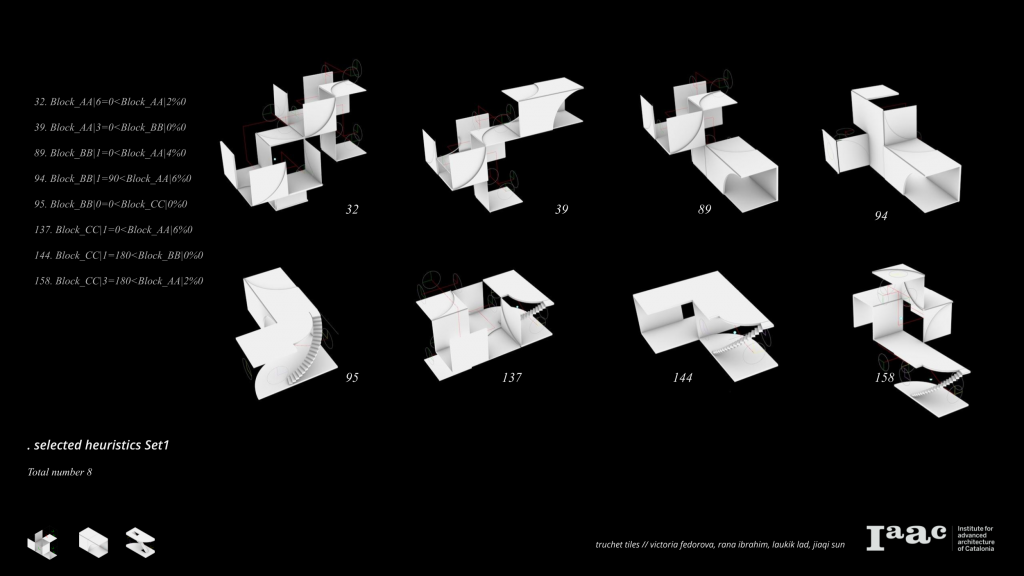
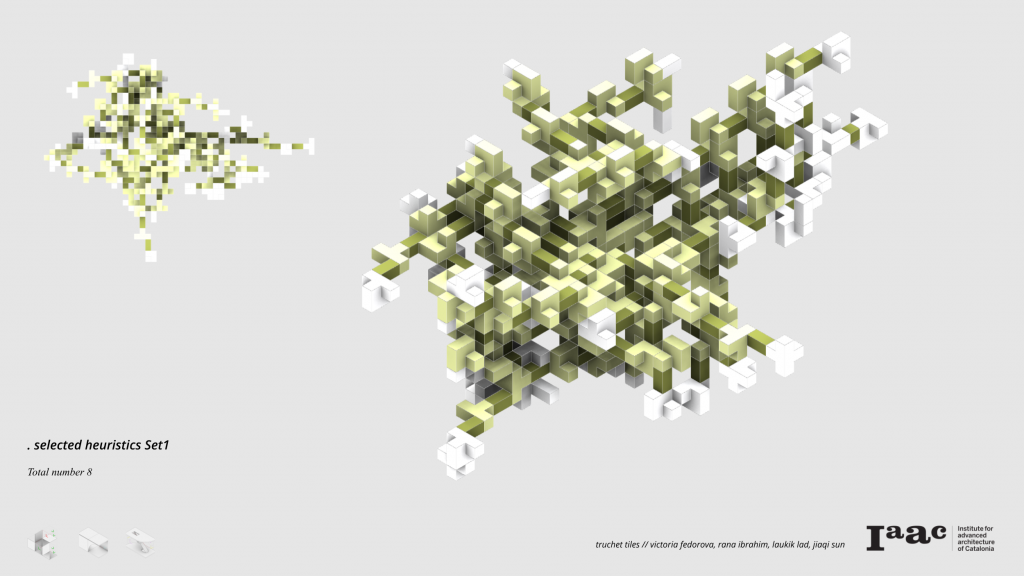
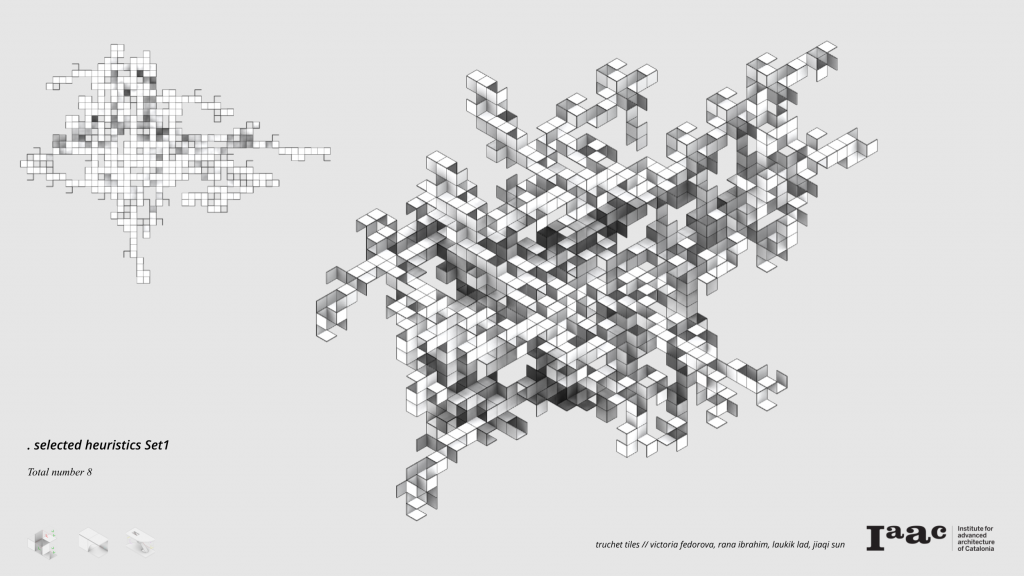
Exploring various heuristic sets.
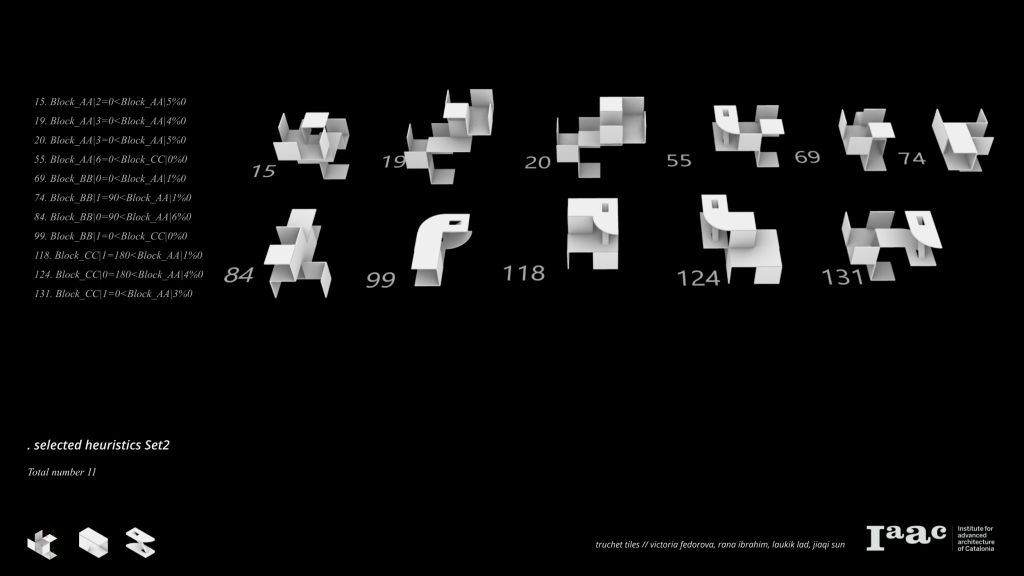
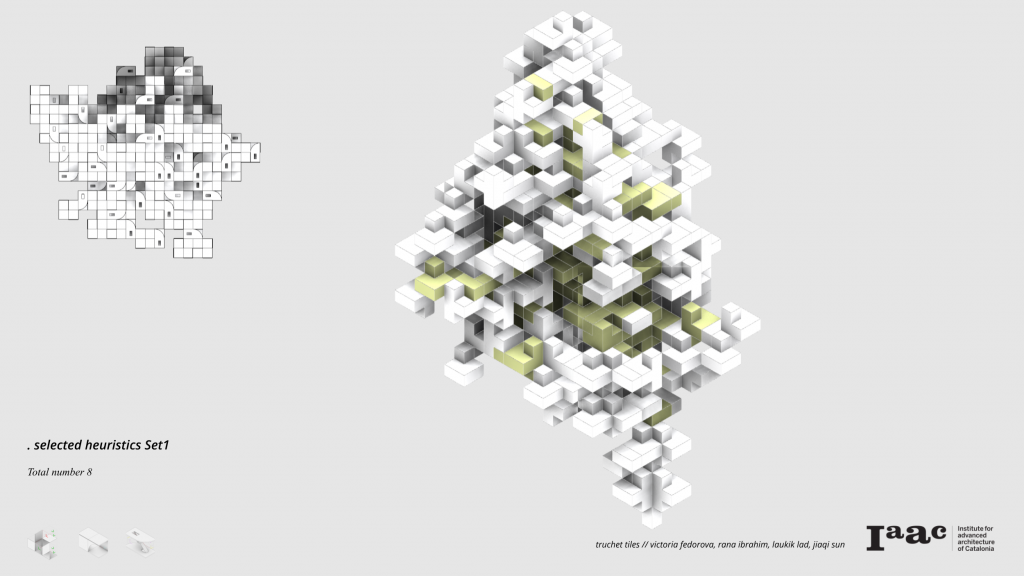
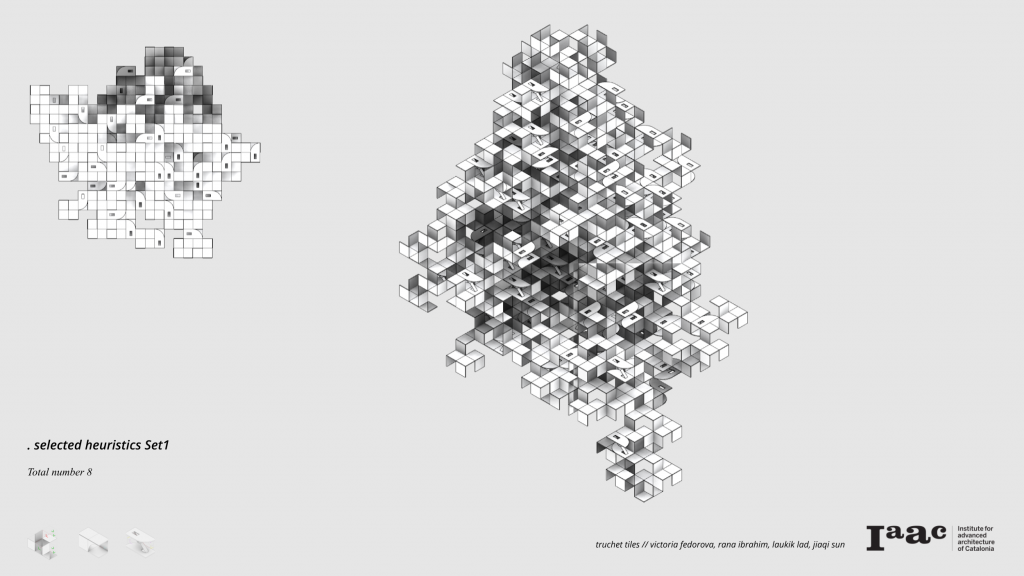
Exploring various heuristic sets.
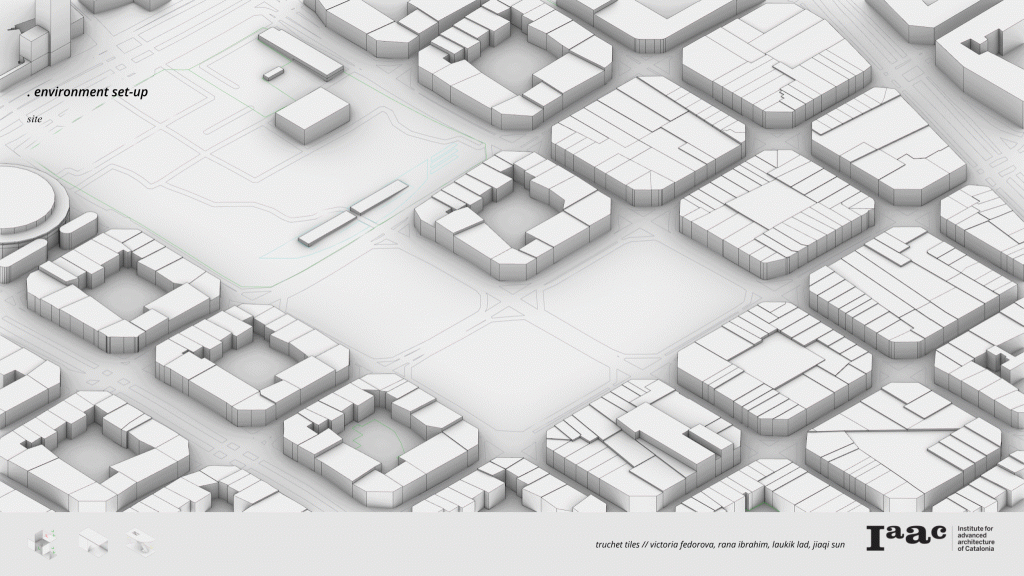
Setting up the environment.
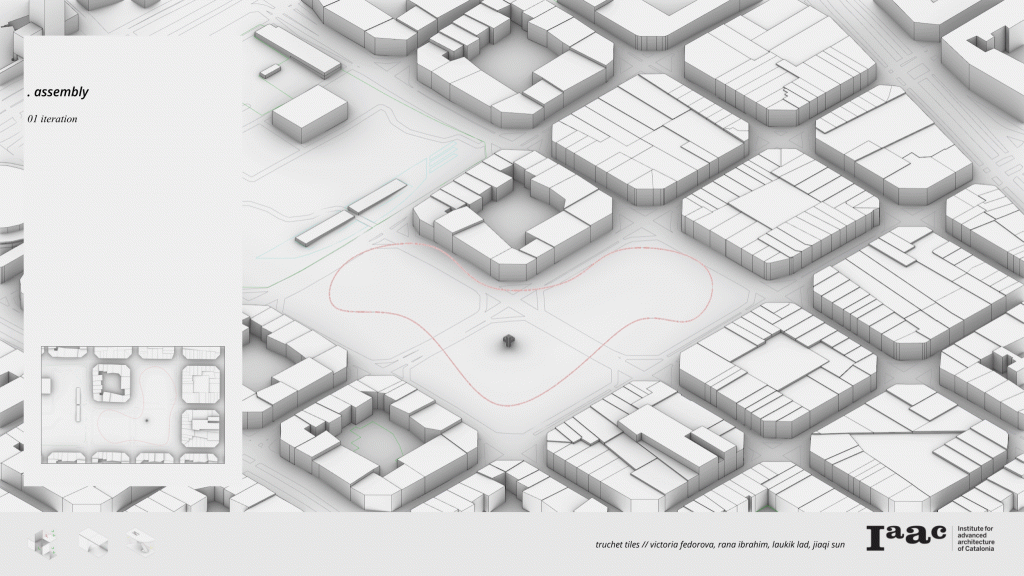
Assembly from 0 to 5000 iterations, in steps of 500 iterations.
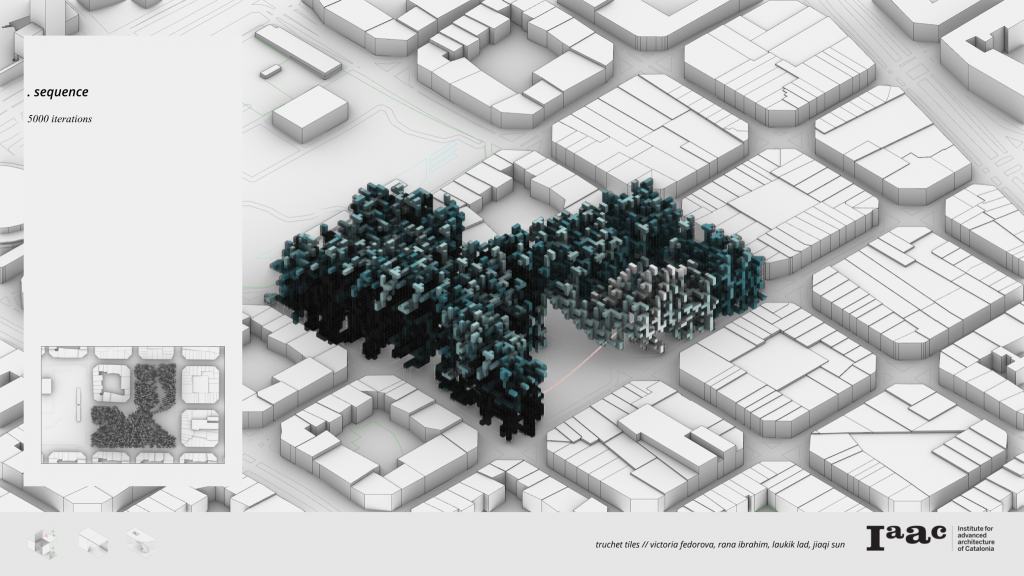
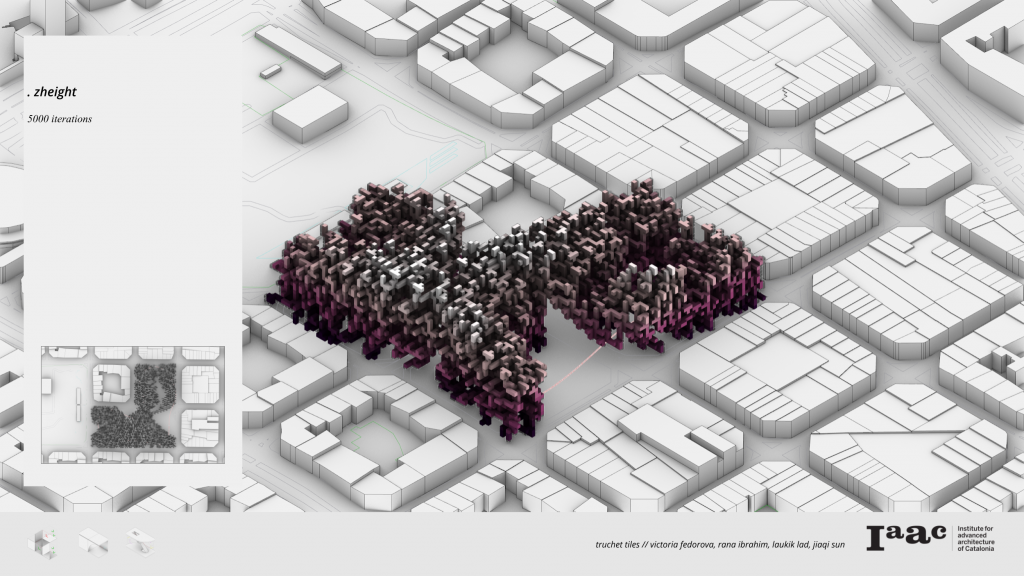
Analyzing assemblage in terms of sequence and z-height.
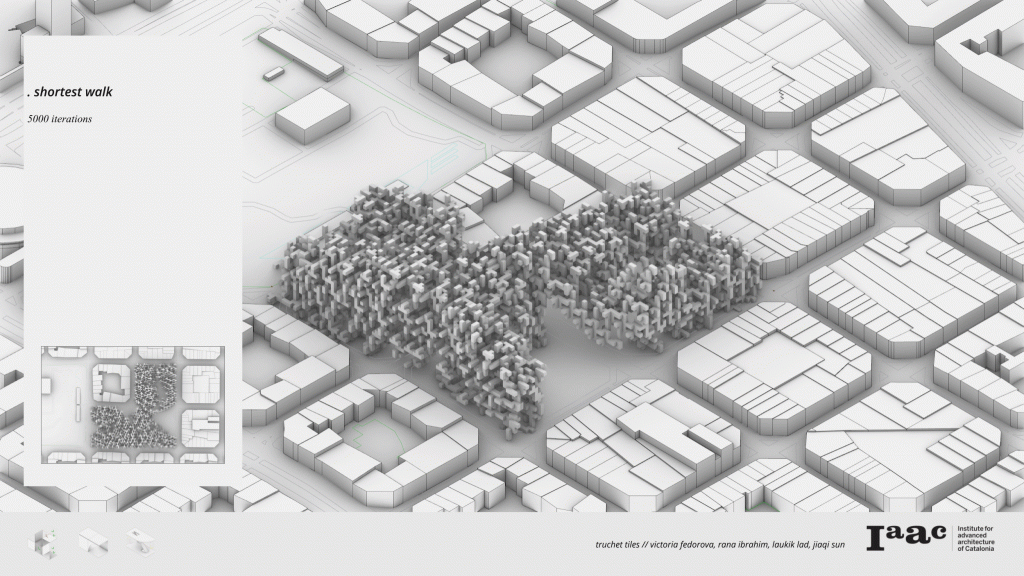
Analyzing the circulation in assemblage.
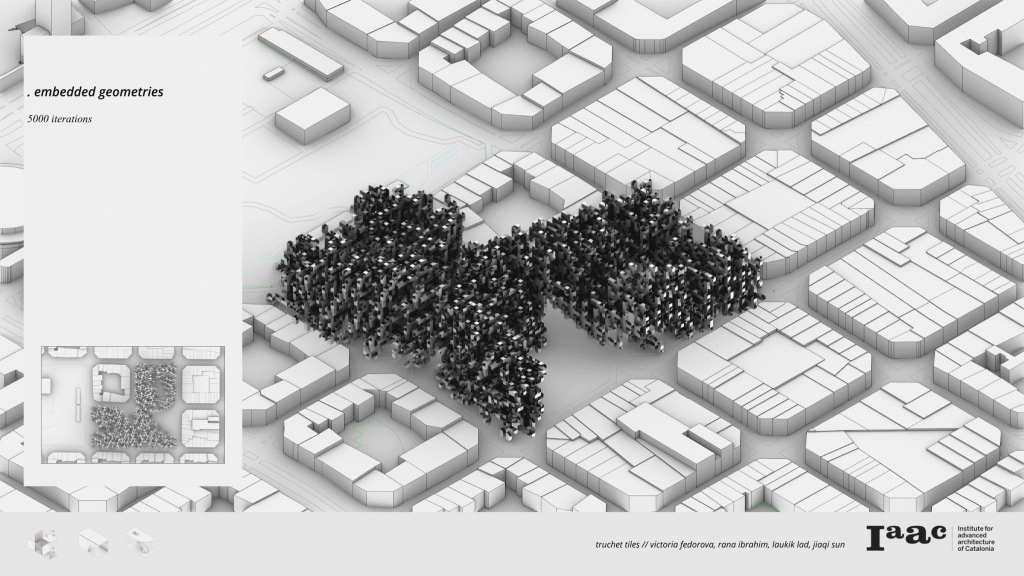
Placing embedded geometries in the assemblage.
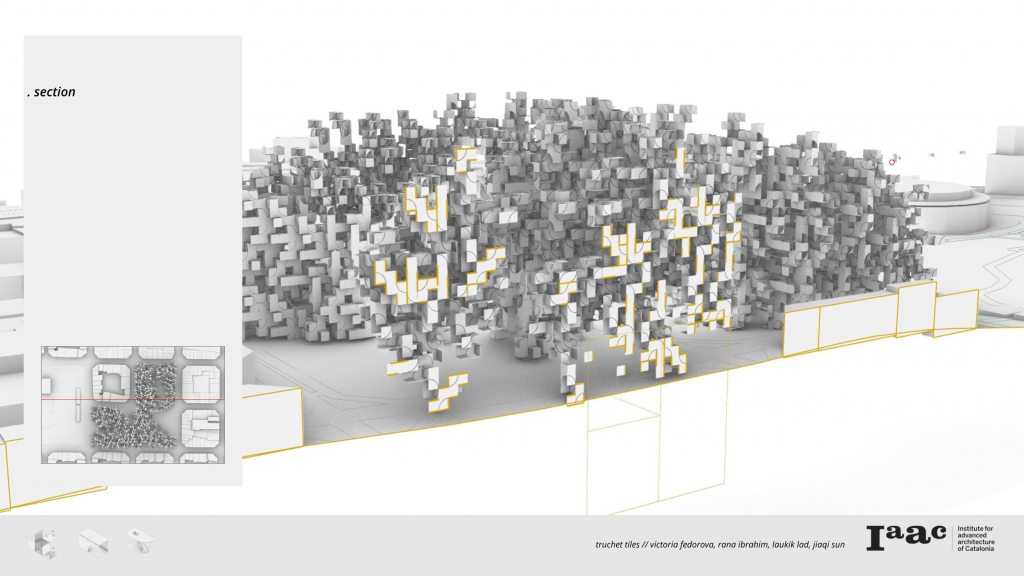
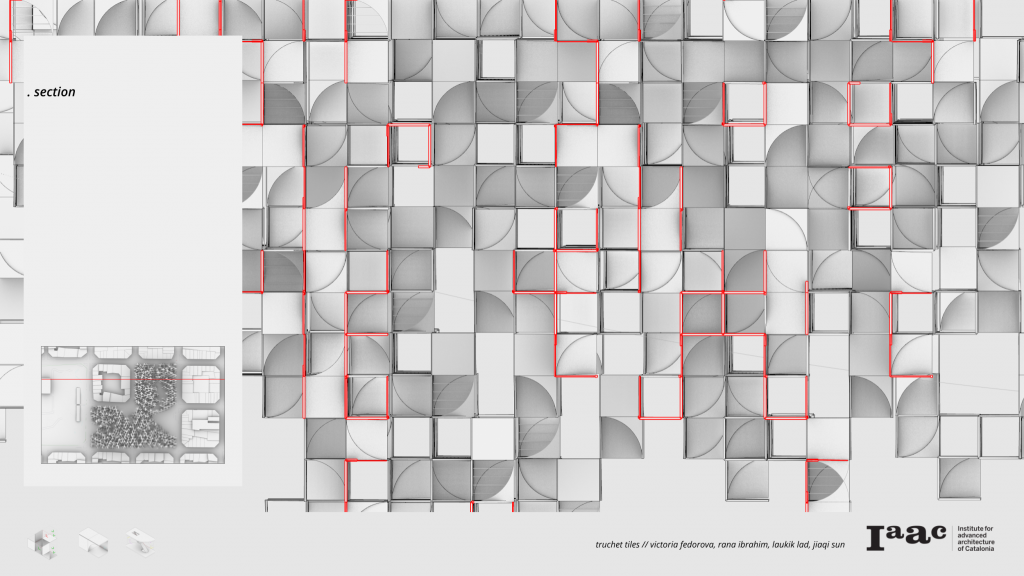
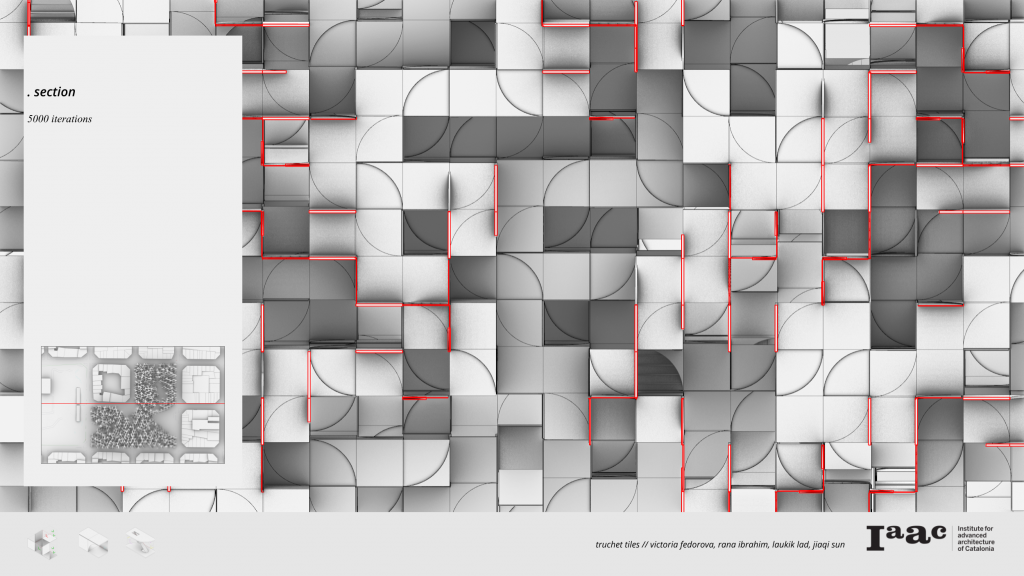
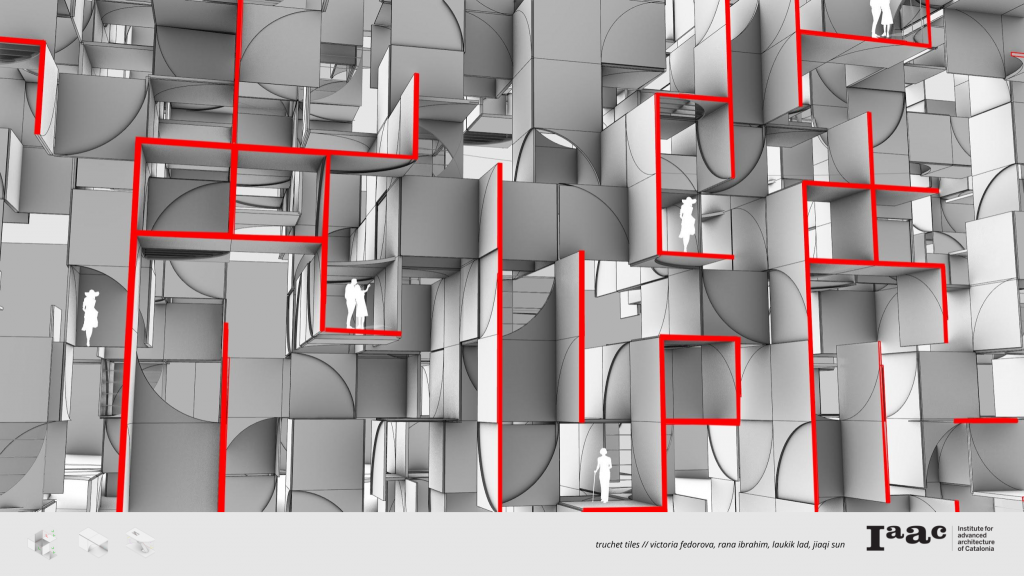
Analyzing the assemblage in sectional perspectives.
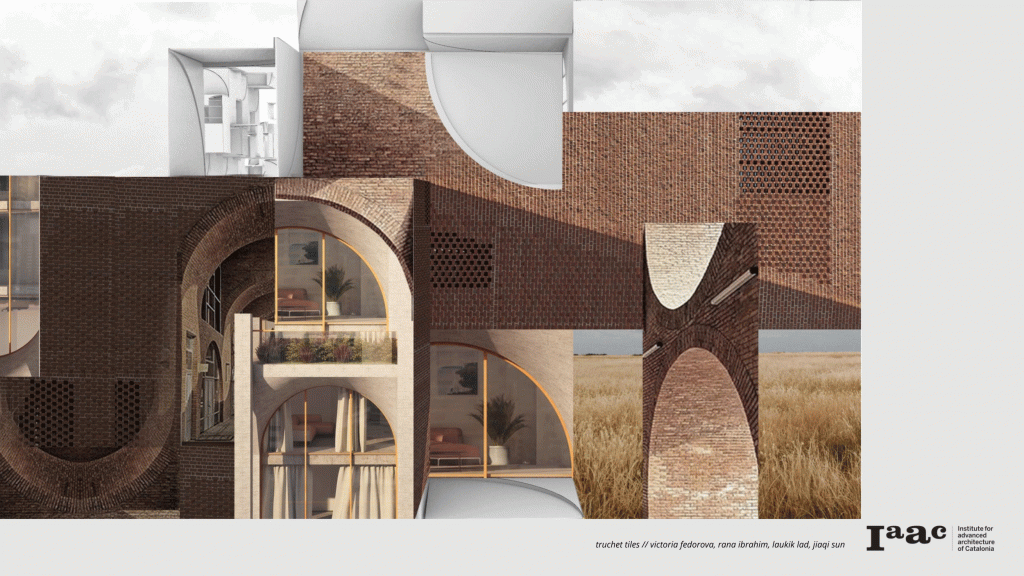
Visualizing the spaces.
